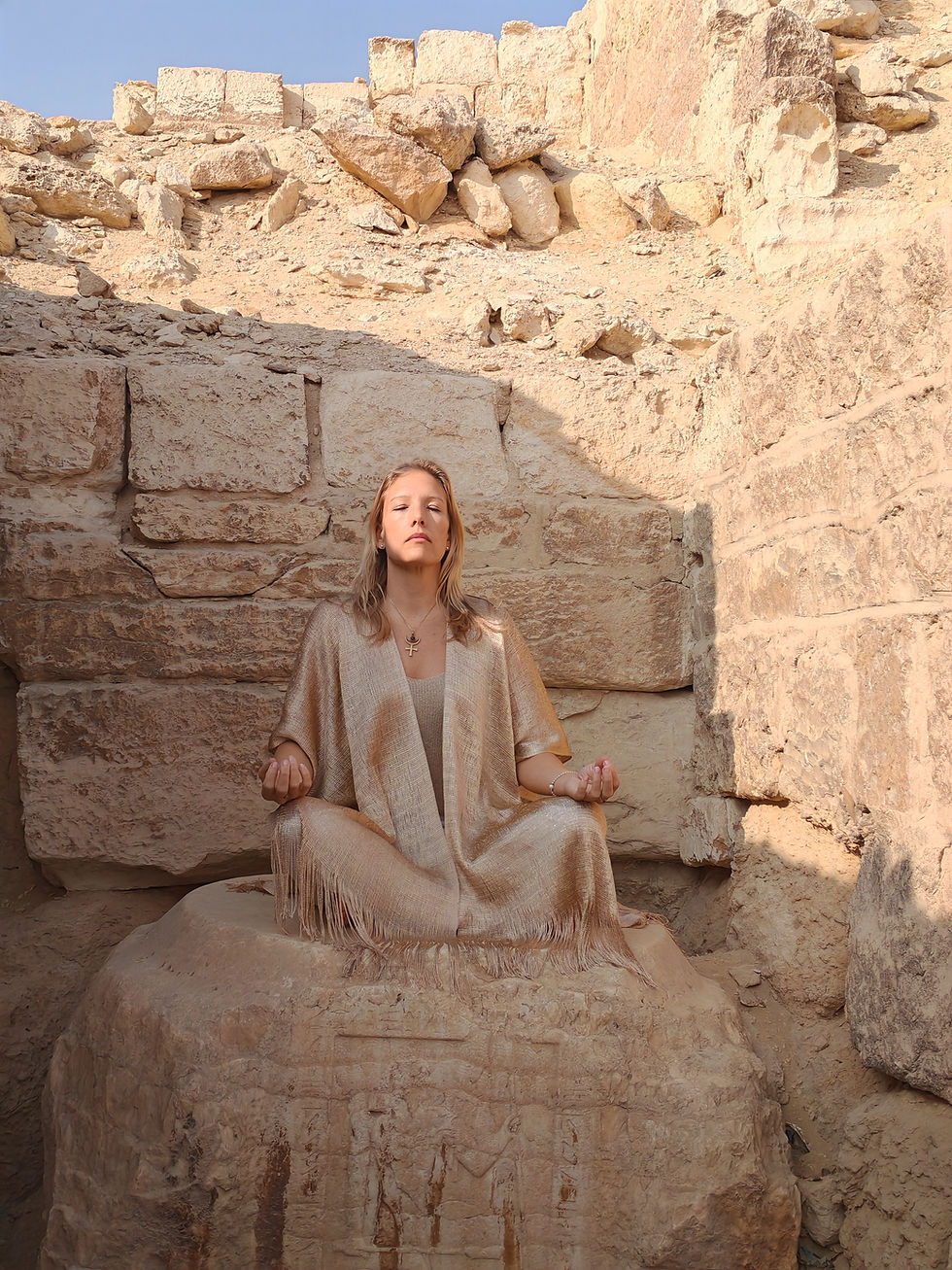What is Tantra? Exploring the Path of Consciousness and Connection
- Anja Amelung

- Sep 27, 2024
- 4 min read
When it comes to Tantra, the question “What is Tantra?” invites many responses, each revealing a different facet of this ancient and profound tradition. Tantra is not something that can be written, learned, or bound by doctrine. It can only be felt and imbibed. It is a living experience, a personal journey that invites us to reconnect with the essence of who we are.
“Tantra is a total acceptance and celebration of the present moment.”
At its heart, Tantra is an exploration of consciousness. It invites us to embrace all aspects of life: spiritual, emotional, and physical, with awareness and acceptance.
The Essence of Tantra
Tantra originates from ancient spiritual traditions, particularly in Hinduism and Buddhism. The word tan means “to weave” or “to expand.” This expansion refers to our ability to increase our awareness and consciousness, allowing us to connect more deeply with ourselves, others, and the divine.
Tantra teaches that the divine is not separate from our day-to-day experiences but can be found in every moment.
Key Elements of Tantra
Embracing Opposites Tantra is about integrating dualities: light and dark, masculine and feminine, pleasure and discipline. By uniting these seemingly opposing forces, Tantra helps us evolve spiritually by embracing all of life.
Awakening Energy The human body is viewed as a microcosm of the universe in Tantra. Through practices like meditation, breathwork, and energy work, we learn to awaken and direct life force energy (prana or Shakti) within us, moving toward higher states of consciousness.
Breaking Taboos Tantra often challenges societal taboos, especially around sexuality. Sexual energy is seen as a powerful force for personal transformation, not something to be repressed. Through conscious practice, we learn to harness this energy for greater spiritual connection.
Sacred Rituals Mantras (sacred sounds), yantras (geometric diagrams), and mudras (hand gestures) are often used in Tantric rituals. These symbolic actions help us invoke divine energy and align ourselves with universal consciousness.
Tantra and Sexuality: Breaking Misconceptions
In the West, Tantra is often associated solely with sexuality. While some Tantric practices do focus on sexual energy, this is only one aspect of the larger tradition. Tantra’s approach to sexuality is about using it as a tool for deeper spiritual awakening, not indulgence. It teaches us that sexuality is sacred and that through mindful exploration, we can transcend the physical and access higher states of consciousness.
However, it’s important to remember that many Tantric paths do not involve sexual practices at all. Tantra’s true essence is found in meditation, breathwork, energy cultivation, and other non-sexual practices that help us align our body, mind, and spirit.
The Path of Awakening: Pleasure, Love, and Peace
A tantric path can open your senses to the deep pleasure, love, and peace that already reside within you. Instead of striving to "achieve" something outside of yourself, Tantra invites you to relax into what already is, allowing you to cultivate a blissful surrender to being rather than doing.
During a Tantra exploration, whether at a festival, workshop, or personal practice, participants may engage in a variety of techniques, including:
Tantric Meditations: Meditations that quiet the mind and help you connect to your inner self.
Tantric Energy Work: Practices such as breathwork and visualizations that help move and harness energy within the body.
Tantric Sexuality: Sacred intimacy practices that can challenge and transform taboos around sexual energy.
All of these practices encourage self-exploration, but they are also rooted in listening to your own needs. Self-responsibility is key, and every individual is encouraged to honor their personal boundaries and limits.
The Importance of Boundaries and Self-Responsibility
Tantra emphasizes the importance of creating a safe space where participants can explore without pressure. Boundaries are sacred, and Tantra teaches us that respecting our own limits and listening to our bodies is an integral part of the practice.
At Tantra festivals and workshops, initial boundary-setting workshops are common. These ensure that each participant feels safe, respected, and empowered to engage only in what feels right for them. Tantra is about self-responsibility. You decide how far you wish to go in your exploration.
How to Practice Tantra
If you’re drawn to Tantra, there are many ways to begin exploring. Common practices include:
Meditation: Quieting the mind to deepen your connection with the present moment.
Breathwork: Techniques to awaken energy and expand consciousness.
Ritual and Mantra: Invoking sacred energy through sound and symbolic action.
Sacred Intimacy: Exploring the body’s energies, challenging taboos, and opening to deeper levels of connection with yourself and others.
Each of these practices invites you to return to your true self and awaken to the love, pleasure, and peace that reside within.
Final Thoughts on Tantra
Tantra is an invitation to live with deeper awareness and intention. It reminds us that every moment, every experience, and every interaction is an opportunity to connect with the divine. Whether you are exploring meditation, energy work, or sacred intimacy, Tantra offers a path of expansion. It is an opportunity to weave the spiritual and physical together and live in harmony with your true essence. It is a deeply personal journey that leads us toward a greater understanding of life and a deeper connection to the present moment.

_edited.png)



Comentarios